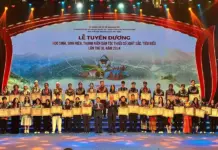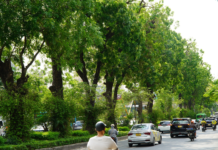Am Duong (Yin and Yang) – Bac Ninh
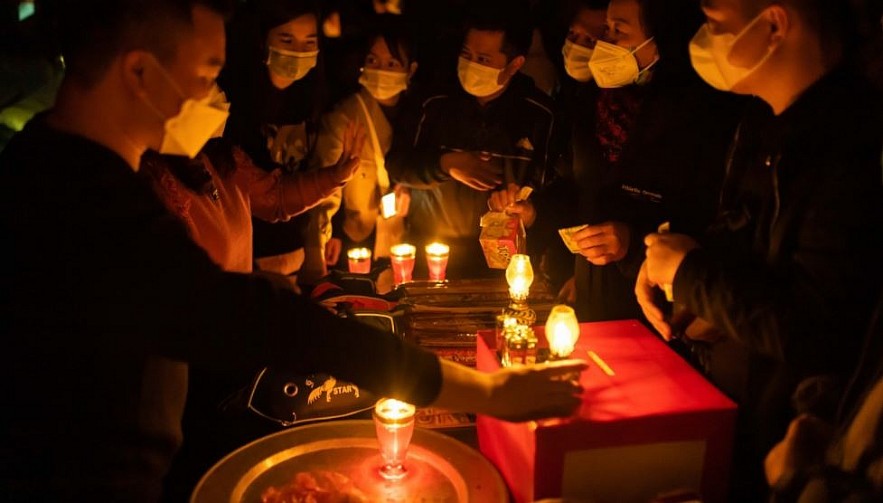 |
| Lamps and candles sold at Am Duong fair. (Photo: VOV) |
Am Duong fair, also known as Ga (chicken) market of Xuan O village, Bac Ninh province, only opens on the fourth night of the Lunar New Year. The fair mostly sells black chickens, candles, lamps, and altar decorations.
In AD 43, the Han Dynasty summoned Ma Yuan to combat the Vietnamese Trung sisters, who defended the country’s independence.
Ma Yuan’s soldiers met Trung’s army in Bac Ninh. A fierce battle broke out, claiming the lives of hundreds of soldiers.
People say midnight is the only time in the day when the alive and dead can meet. Relatives of the dead soldiers, therefore, took the time to “meet” their loved ones.
The fair is based on that local tradition. Starting at dusk and lasting until the dawn of the next day, the fair connects people and souls to buy and sell luck.
Gia Lac – Hue
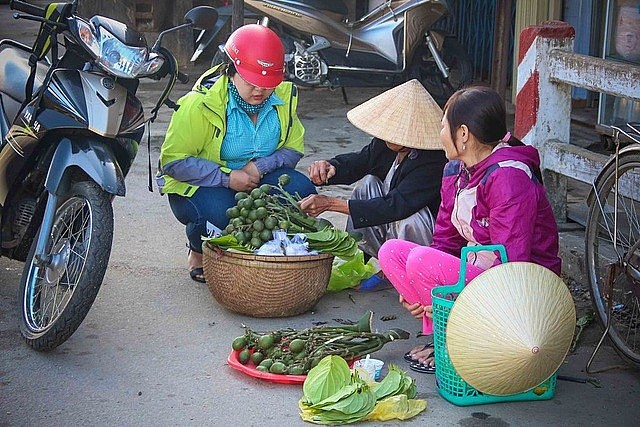 |
| Locals often buy betel and areca in the Gia Lac fair. (Photo: Vietnamnet) |
Gia Lac fair, located three kilometers from Hue city, has a long-standing history.
Gia Lac takes place on the three first days of the lunar year. As a tradition, local people come to the market to buy fruits, betel and areca, and Hue specialties for luck.
The market fair was established by Nguyen Phuoc Binh, the sixth son of King Gia Long, on the Lunar New Year in 1826.
It was originally attended by royals, then ordinary citizens joined and brought diverse goods and games to the fair.
After decades, the goods and games have changed but local people’s habit of going to Gia Lac fair on Tet remains.
Go – Binh Dinh
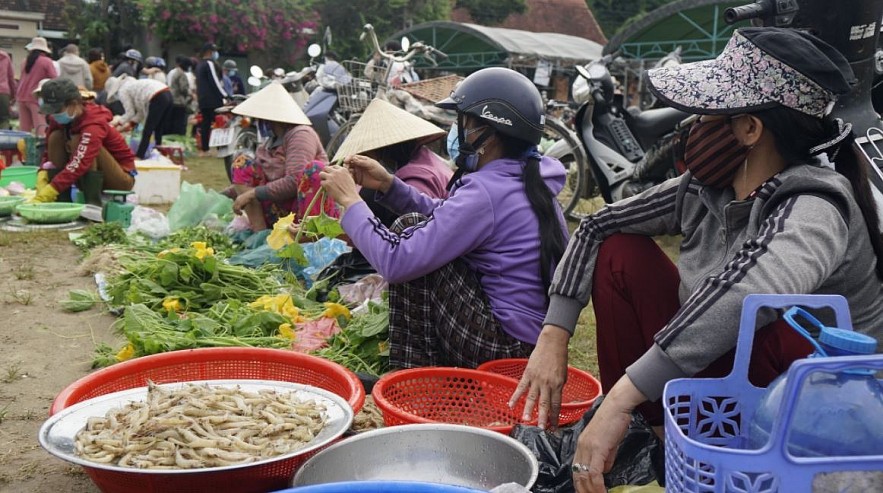 |
| Vendors sell seafood at Go market fair. (Photo: Thanh Nien) |
The market fair named Go only opens on the first day of Tet. First held in Binh Dinh during the Tay Son period when New Year’s Eve comes, people in the surrounding areas bring meat, fish or their homegrown vegetables, fruits, betel, and areca to the market.
Le Thi Huong, 87, has sold rice, salt, betel, and areca at the fair for more than 60 years and said commerce activities on Tet brought more joy than profits.
“Buying and selling things in the new year is not about earning money but about enjoying the spring atmosphere. But I guess I will take a break soon, I am getting too old for this. My grandchildren also advised me to stop, but I miss going to the market. I have been doing so from a young age,” she said.
Dinh Ca – Hai Duong
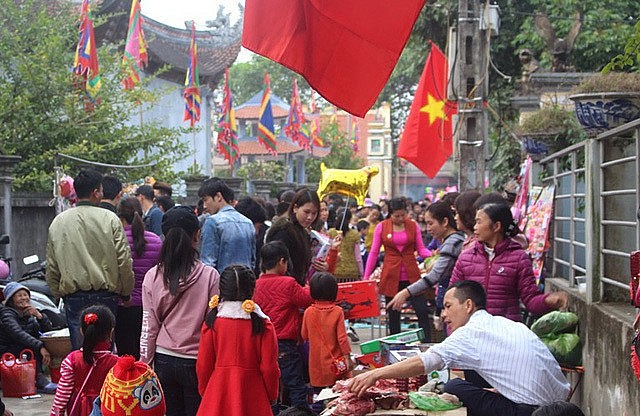 |
| Dinh Ca fair in Hai Duong province. (Photo: Vietnamnet) |
Dinh Ca fair is held in Dinh Ca area in Ninh Giang, Hai Duong every year on the second day of Tet.
The market has existed for hundreds of years. Besides selling goods, the market is a dating place for youngsters.
The fair starts at dawn and only lasts for a few hours. Before sunrise, vendors gather in the area, beginning to display their goods
Unlike normal markets, after buying goods, people stop by the nearby communal house to offer incense to the heroes who built the village.
Vieng – Nam Dinh
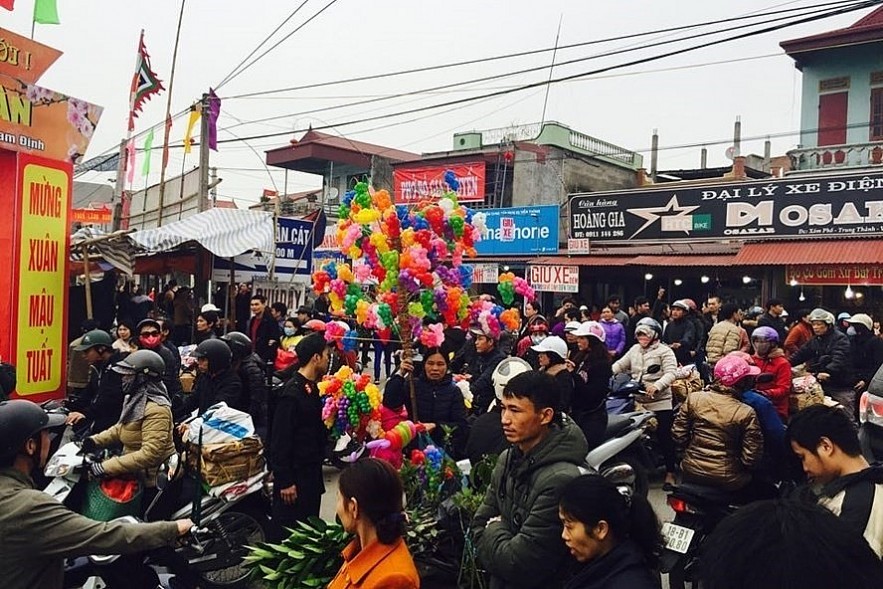 |
| (Photo: Lao Dong) |
On the night of Jan. 7 and 8 in the lunar calendar, Vieng market is held in Nam Giang town, Nam Dinh province.
According to folk, once two generals matched through Van Trang village after winning a battle. When they entered the village, their horses’ hooves broke, so they had to stop and asked the locals to remake the hooves. While resting in the village, two generals announced their victory.
Hearing the news, people in surrounding areas gather in Van Trang to celebrate, which became the annual Vieng market.
Vieng market mainly sells agricultural tools such as baskets and sickles. Many people believe that buying these items helps them have a bountiful harvest. Besides, the Vieng market sells trees, which stand for fortune and prosperity.
Chuong – Thanh Hoa
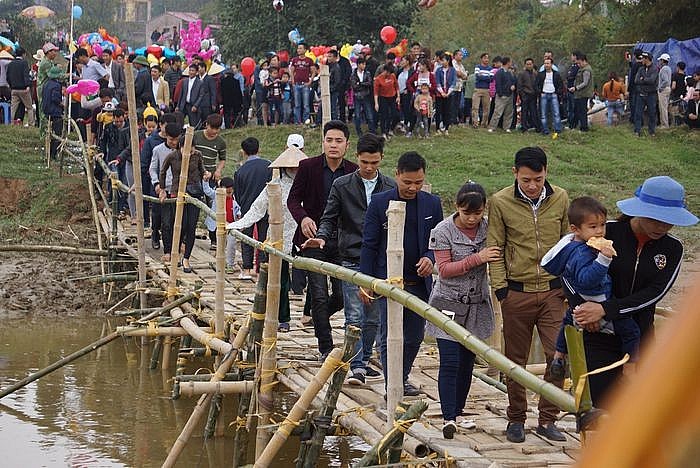 |
| (Photo: Baomoi) |
On the sixth day of the lunar year, thousands of people from all over Thanh Hoa province flock to Giang hamlet to join Chuong fair.
The fair is held on a wide strip of land along the Hoang river, where three districts meet. A bamboo bridge was built over Hoang river so that people from other districts can join the fair.
Most people come to Chuong market to buy red rice paper, believing that the color red brings luck for the new year.
Many also buy salt. According to Vietnamese tradition, buying salt at the beginning of the year scares away bad luck and welcomes fortune.
A tomato throwing game is held at the market, as young people throw tomatoes at each other to wish for prosperity.


